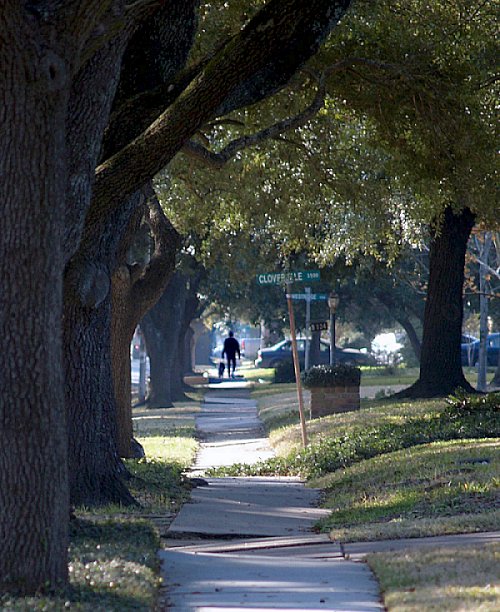An Old Tension
by Jean Krchnak
Today, an old tension in a crowded new world. The University of Houston presents this series about the machines that make our civilization run, and the people whose ingenuity created them.
In a 1984 essay, John Brinckerhoff Jackson looked at settlement patterns through time and two forces that made them remain the same and made them change: First, our need to create communities:
No human being is at best in a solitary environment. Our interdependency requires that sustained discourse, idea exchange, and disagreement sharpen our identity. Aristotle called humans political animals, "debating good and evil, justice and injustice, and how to act to achieve a good life."
The other force is that part of the natural order: spending time to provide shelter, food, clothing, and security. So, when we set out to create a community, we also create an environment modified by the settled group. We create a new landscape.
These social/political and natural forces make of us, a fickle mixture. We love a city's dense vitality, yet we complain about a lack of green spaces and parks. We want to live alone, close to nature in the open countryside, while we yearn to be joined politically, civically and socially. That tension, by the way, has undermined every effort to create a utopian community.
Once a community establishes its landscape, with boundaries, roads and places of assembly, our universal need has always been to organize those spaces. Jackson sees us organizing space into micro-spaces, then assembling the micro-spaces into macro-spaces. He says,
... in the political landscape the natural environment has no inherent identity of its own; it is simply a means to an end, a human end ... .
Of course, with less space available, we now commingle the uses of space. A forest is used for recreation, meditation and logging.
The most elementary landscape has always been the piece of land where a family lives and works, and every other space has been an extension of it. Greeks considered land sacred to the gods. A Roman's land was supposed to remain in the family's possession forever. Burying the dead on it made it a sacred space. Aristotle saw the small landowner as a model of civic virtue, and the family holding a miniature state. It was separated from the community by trees and fences but also near enough to the road to be in touch.
When Thomas Jefferson drafted his Land Ordinance of 1785, he proposed a rectangular grid system. This vast, almost nationwide grid divided land into plots a mile square. It also placed a visible design on an untouched landscape; and it continues to affect urban, suburban, and farmland planning today.
With explosive population growth, we wonder how 21st-century societies can organize space. Agronomists now view the family farm as too small a unit to be efficient. Environmentalists say it's too small to be sustainable. I wonder what form our longed-after Garden of Eden can possibly take in today's crowded new world.
I'm Jean Krchnak, at the University of Houston, where we're interested in the way inventive minds work.
Jean Krchnak is Curator of Architecture Visual Resources and curates the college's teaching collection of images. She has had several articles published on architecture and theory and is currently working on a collaborative project to transition the teaching collection to a digital format.
J. B. Jackson, A Pair of Ideal Landscapes. Discovering the Vernacular Landscape. (New Haven: Yale University Press, 1984).

(Photo by JHL)